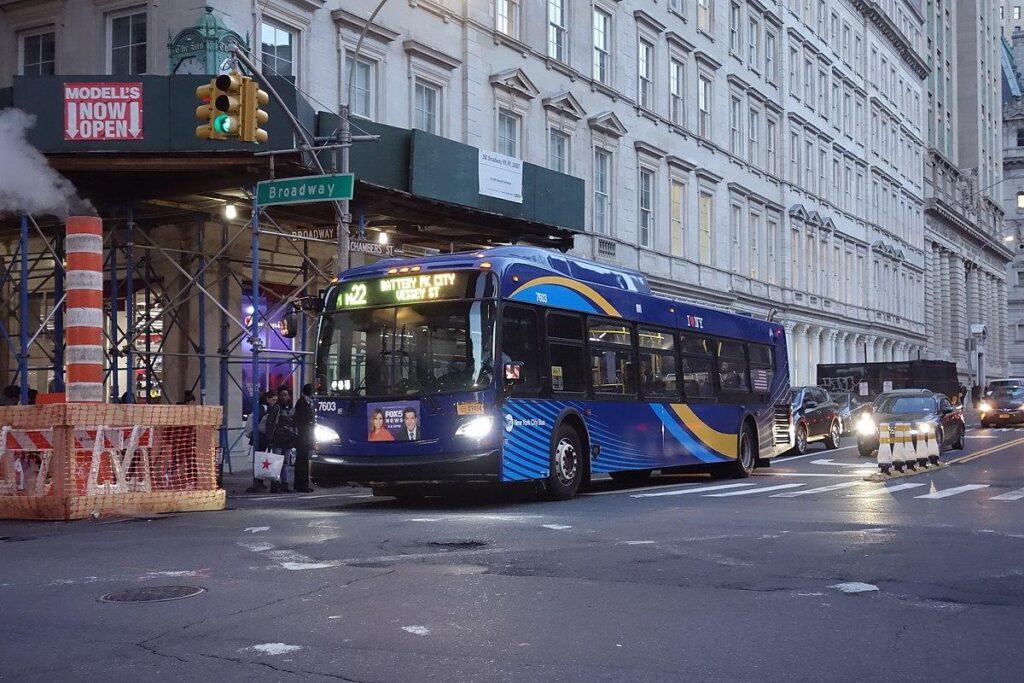Manhattan Bus Service Accelerates Following Congestion Pricing Introduction
In the month following the rollout of New York City’s congestion pricing initiative, Manhattan’s bus system has experienced a significant boost in both speed and dependability. By limiting the number of vehicles permitted to enter the most traffic-dense areas below 60th Street, buses have been able to complete routes more swiftly, providing commuters with a more efficient transit option amid previously heavy downtown congestion. Early performance metrics suggest this policy is reshaping urban mobility patterns and enhancing public transit effectiveness in the city’s core.
Recent transit authority data reveals an average increase in bus speeds ranging from 8% to 12% during peak travel times. Notably, routes such as the M14 and M20 have benefited from reduced delays, resulting in shorter trip durations and improved schedule adherence.
| Bus Route | Average Speed Before (mph) | Average Speed After (mph) | Percentage Increase |
|---|---|---|---|
| M14 | 7.1 | 8.0 | 12.7% |
| M20 | 6.8 | 7.5 | 10.3% |
| M5 | 7.5 | 8.2 | 9.3% |
Drivers Behind the Bus Speed Enhancements in Manhattan
The marked improvement in bus transit times can be attributed to several interrelated factors. Primarily, the congestion pricing scheme has curtailed the volume of private vehicles entering Manhattan’s central business district, alleviating street-level gridlock and allowing buses to move more freely. Furthermore, stricter enforcement of dedicated bus lanes has minimized unauthorized vehicle intrusions, ensuring buses maintain uninterrupted travel lanes.
Additional contributors include:
- Deployment of advanced real-time tracking systems facilitating dynamic route management
- Implementation of traffic signal priority that grants buses extended green lights at intersections
- Public outreach campaigns promoting carpooling, cycling, and other sustainable commuting alternatives
- Upgrades to bus stop design aimed at accelerating passenger boarding and alighting
| Factor | Effect on Bus Service |
|---|---|
| Lower Traffic Density | Bus speeds increased by up to 15% |
| Bus Lane Enforcement | Reduction in bus stoppages by 15-20% |
| Signal Priority Systems | On-time arrivals improved by 10% |
| Bus Stop Enhancements | Boarding times cut by 25% |
Ongoing Obstacles Impacting Bus Service Consistency
While the congestion pricing program has yielded encouraging results, several challenges continue to affect the reliability of Manhattan’s bus network. Traffic congestion remains volatile outside the congestion zone, leading to unpredictable delays. Additionally, some traffic signal infrastructure remains outdated, limiting the effectiveness of bus prioritization efforts. Inconsistent enforcement of bus-only lanes further contributes to occasional blockages, frustrating passengers who depend on punctual service.
Operational hurdles also persist: mechanical breakdowns and overcrowding during rush hours strain the system’s capacity to maintain schedules. Staffing shortages and fluctuating ridership levels complicate fleet management, especially during off-peak periods.
| Challenge | Effect | Current Severity |
|---|---|---|
| Traffic Outside Congestion Zone | Irregular delays | Moderate |
| Obsolete Traffic Signals | Reduced bus priority | High |
| Bus Lane Enforcement | Frequent lane obstructions | Variable |
| Fleet Maintenance Issues | Service disruptions | Challenging |
| Driver Shortages | Difficulty maintaining schedules | Ongoing |
- Modernizing infrastructure is essential to preserve and enhance gains
- Stronger enforcement of bus lanes could significantly boost reliability
- Investing in workforce and fleet expansion remains a top priority for transit authorities
Future Initiatives to Sustain and Advance Bus Speed Gains
To build on the initial improvements in bus travel times, a multifaceted approach is necessary. Expanding the network of dedicated bus lanes and intensifying enforcement against unauthorized vehicles will be crucial to maintaining smooth bus flow. Additionally, integrating cutting-edge technologies such as adaptive traffic signal control can dynamically prioritize buses at intersections, reducing wait times and improving schedule adherence.
Community involvement programs aimed at encouraging public cooperation in keeping bus corridors clear, alongside promoting alternative transportation modes, will complement congestion pricing efforts by further decreasing street-level vehicle density.
Looking ahead, the adoption of electric buses equipped with sophisticated telematics systems promises to enhance operational efficiency while advancing environmental sustainability goals. Effective collaboration among city planners, transit agencies, and enforcement bodies will be vital to developing responsive policies that adapt to evolving traffic patterns and commuter needs.
| Strategic Initiative | Expected Outcome |
|---|---|
| Expansion of Dedicated Bus Lanes | Decrease delays by 15-20% |
| Real-Time Traffic Signal Prioritization | Reduce intersection wait times by 30% |
| Enhanced Bus Lane Enforcement | Improve lane compliance by 25% |
| Deployment of Electric Buses | Lower emissions and reduce maintenance downtime |
Conclusion
The early outcomes of Manhattan’s congestion pricing program indicate a positive transformation in urban transit efficiency. With measurable improvements in bus speeds and reliability during its initial month, this initiative offers a viable model for mitigating traffic congestion and enhancing public transportation in dense metropolitan areas. As New York City continues to refine and expand this program, there is cautious optimism that these initial successes will evolve into sustained benefits for daily commuters and the city’s overall mobility landscape.













